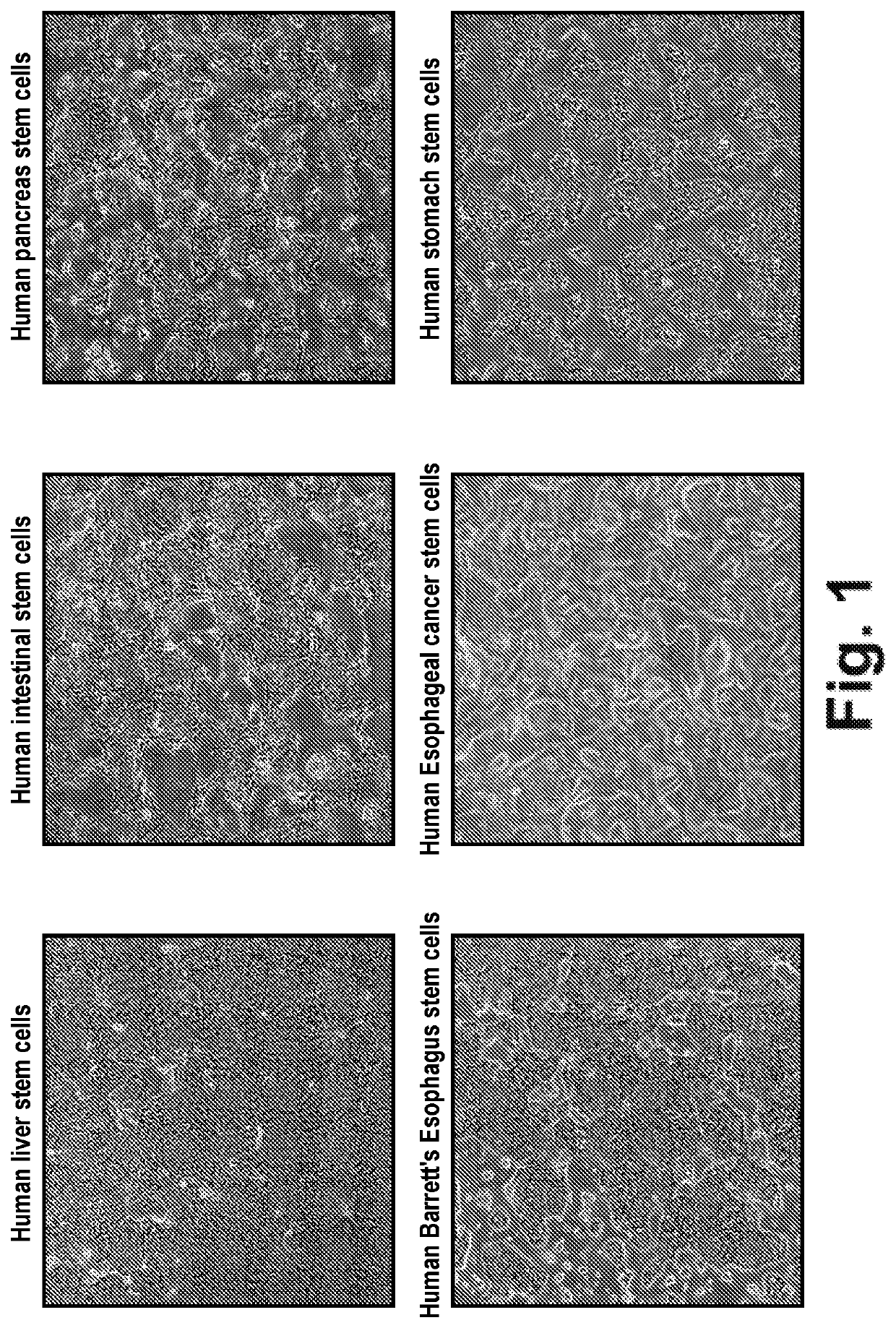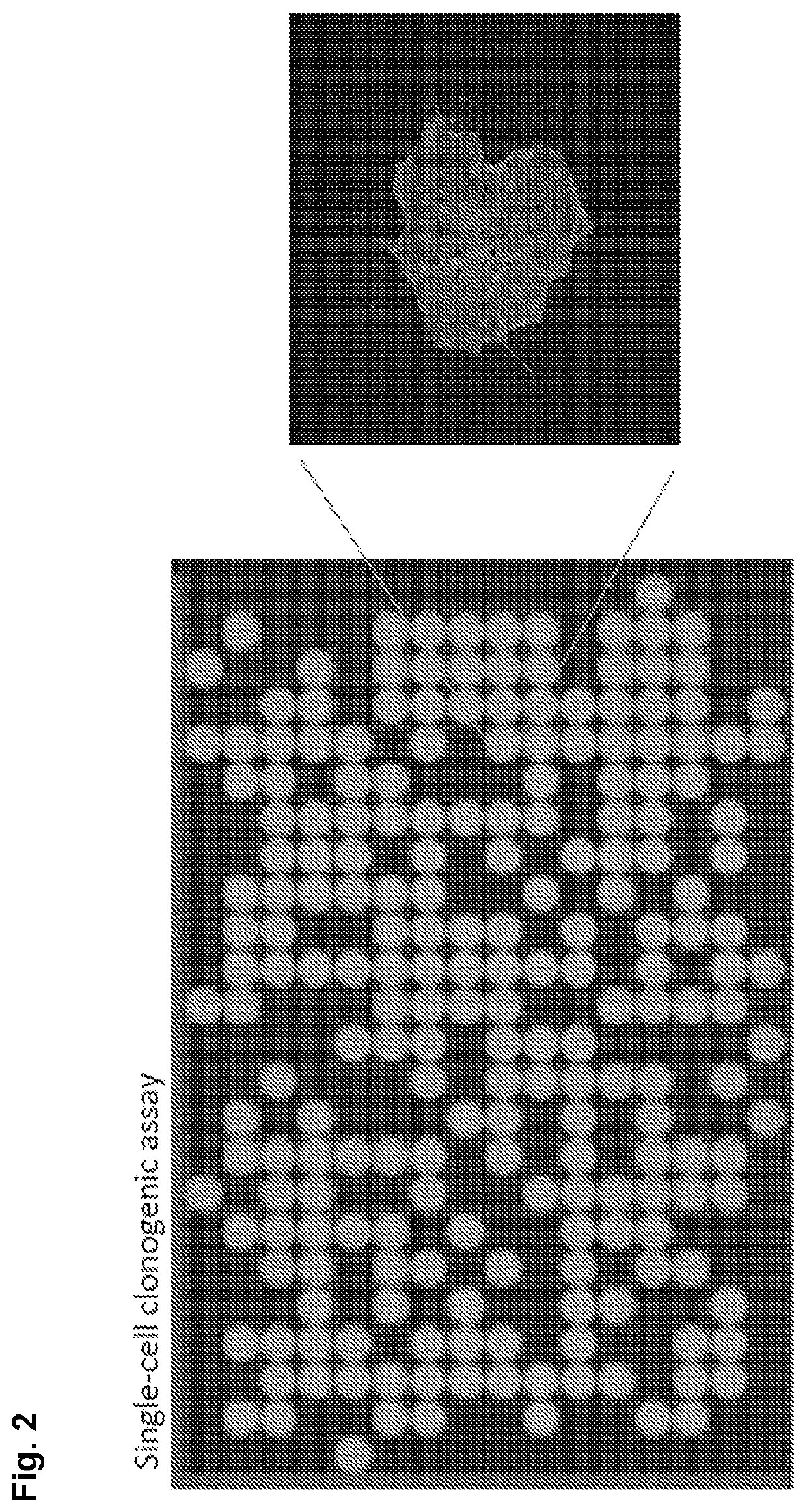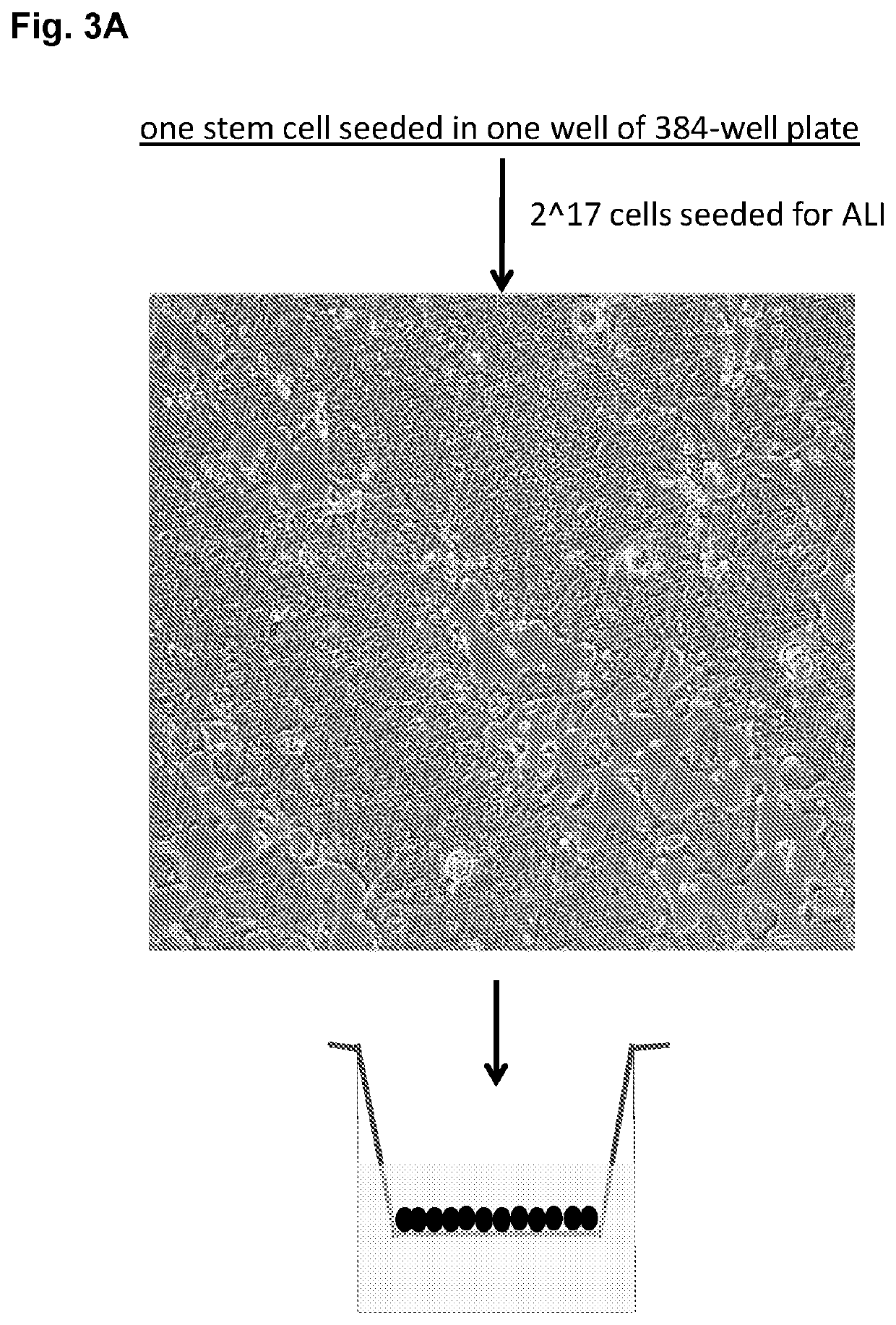Stem cell culture systems for columnar epithelial stem cells, and uses related thereto
a columnar epithelial and stem cell technology, applied in the field of stem/progenitor populations, can solve the problems of further complications, limited cloning of adult stem cells, embryonic stem cells, etc., and achieve the effect of enhancing expression of at least one gen
- Summary
- Abstract
- Description
- Claims
- Application Information
AI Technical Summary
Benefits of technology
Problems solved by technology
Method used
Image
Examples
Embodiment Construction
1. Overview
[0113]The invention described herein relates to methods of isolating and / or maintaining in culture non-embryonic (e.g., adult or fetal) epithelial stem cells from the columnar epithelia of organs. Epithelial stem cells thus isolated from the various tissues or organs can self-renew or propagate indefinitely in vitro, are multipotent and can differentiate into the various differentiated cell types normally found within the tissue or organ from which the stem cells are isolated. Cultures (including in vitro cultures) comprising the epithelial stem cells thus isolated are also within the scope of the invention.
[0114]In addition, the isolated epithelial stem cells can be propagated through clonal expansion of a single isolated stem cell, to produce a clone (e.g., as an in vitro culture) of which at least about 40%, 70%, or 90% or more cells within the clone can be further passaged as single cell originated clones. Thus, the stem cells isolated using the methods of the inventi...
PUM
 Login to View More
Login to View More Abstract
Description
Claims
Application Information
 Login to View More
Login to View More - R&D
- Intellectual Property
- Life Sciences
- Materials
- Tech Scout
- Unparalleled Data Quality
- Higher Quality Content
- 60% Fewer Hallucinations
Browse by: Latest US Patents, China's latest patents, Technical Efficacy Thesaurus, Application Domain, Technology Topic, Popular Technical Reports.
© 2025 PatSnap. All rights reserved.Legal|Privacy policy|Modern Slavery Act Transparency Statement|Sitemap|About US| Contact US: help@patsnap.com



